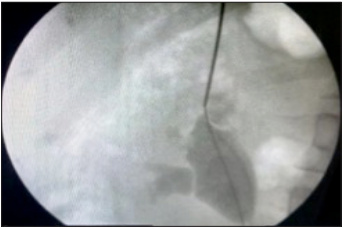Objective: Supracostal access is avoided for fear of potential intrathoracic complications and subcostal approach is favored as it carries minimal or no risk of intrathoracic complication. The aim of this study was to evaluate safety and efficacy of supracostal approach for percutaneous renal surgery.
Material and methods: A total of 60 cases were enrolled and studied prospectively in this study. The patients had upper (n=10), and lower (n=12) calyceal, pelvic (n=12), proximal ureteral (n=14) stones, and pelviureteric junction obstruction (n=12). All the punctures were made by urologist under fluoroscopy.
Results: All the punctures were made between 11th and 12th ribs (supra-12th); none of the punctures was made above 11th rib. The overall complication rate in our study was 26.7%. Four patients (6.7%) had pleural rupture and all the four presented with hydrothorax. The other complications included intraoperative hemorrhage in 1 (1.7%), and pelvic perforation in 1 patient (1.7%), Amplatz sheath migration/loss of tract was detected in 1 (1.7%), postoperative fever in 2 (3.3%), prolonged hematuria in 3 (5%) and residual disease in 4 (6.7%) patients
Conclusion: Supracostal approach should be used whenever indicated which was found to be both effective and safe as far as intrathoracic and other complications are concerned.
Cite this article as: Ahmed MM, Najar FA. Safety and efficacy of supracostal superior calyceal approach for percutaneous renal surgery. Turk J Urol 2019; 45(Supp. 1): S121-S124

.png)


.png)
